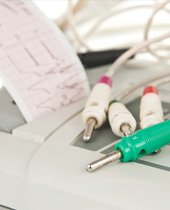Cardiac Arrest
Purpose & organization
The purpose of The Cardiac Arrest Network is to gather researchers with common interests in all aspects of research within the field of resuscitation after cardiac arrest.
The Cardiac Arrest Network represents different areas of specialization and professions, among these are students, nurses, prehospital employees and physicians. All of them contribute and support the research field of resuscitation after cardiac arrest.

Socioeconomic factors may influence outcomes through multiple mechanisms including difference in co-morbidities and differential treatments including less aggressive care.
However, little is known about the impact of socioeconomic factors in patients with in-hospital cardiac arrest both in Denmark and internationally. We wish to assess the relationship between socioeconomic factors and treatments and outcomes for patients with in-hospital cardiac arrest in Denmark. Identifying such relationships will facilitate interventions to improve equality in treatment and outcomes.
Read more about the project
The Use of Telemetry following Acute Myocardial Infarction

The aim of this project is to determine whether there is a difference in return of spontaneous circulation (ROSC) depending on the type of vascular access (intravenous or intraosseous) placed during out-of-hospital cardiac arrest (OHCA).
Read more about this project
Handover of information from ward staff to the cardiac arrest team during in-hospital cardiac arrest: Identifying deficiencies and building a new model
This study aims to investigate barriers and facilitators for handover of patient information from ward staff to the cardiac arrest team during in-hospital cardiac arrest (IHCA) and develop a tool for structured handover.
